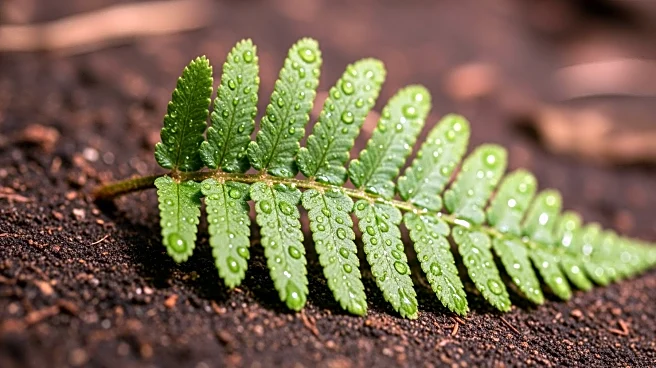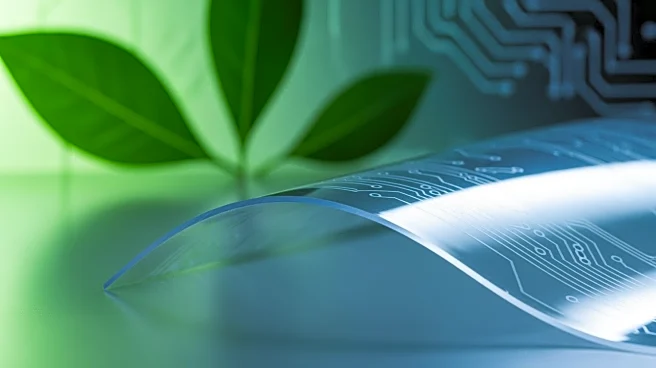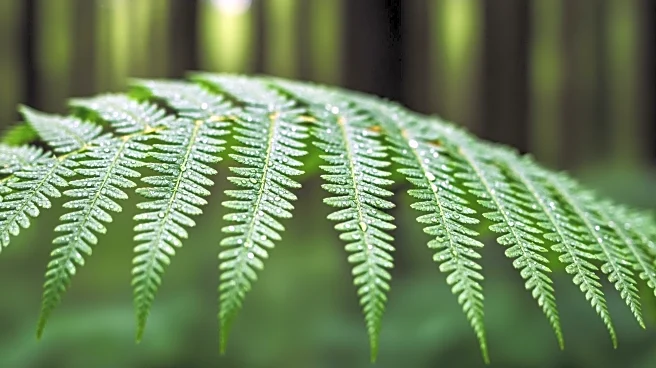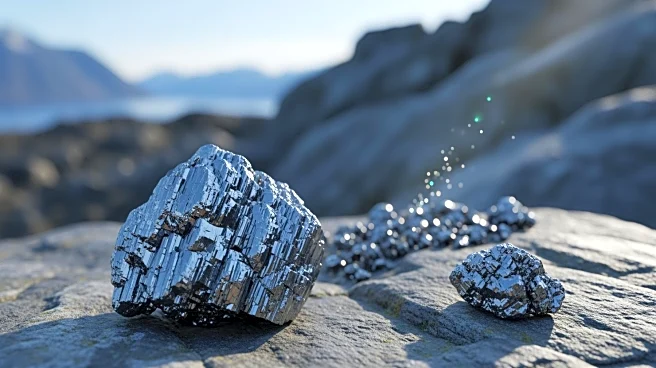What's Happening?
Researchers in China have made a significant discovery regarding the fern species Blechnum orientale, which could help alleviate the rare earth element (REE) crisis. This fern, known as a hyperaccumulator,
naturally absorbs metals from soil and water through its roots. The study, led by geochemist Liuqing He from the Chinese Academy of Sciences, found that the fern forms tiny crystals containing REEs. This breakthrough suggests a potential for 'phytomining,' a green extraction process using plants to harvest metals sustainably. Rare earth elements are crucial for modern technology, energy, and transportation but are difficult to extract without environmental harm. The fern's ability to facilitate REE mineralization introduces a novel approach to sustainable resource development.
Why It's Important?
The discovery of the fern's ability to naturally form REE crystals is significant for several reasons. Rare earth elements are vital for clean energy and high-tech applications, yet their supply is challenged by environmental and geopolitical issues. The potential for phytomining offers a sustainable solution to these challenges, reducing reliance on traditional mining methods that are often environmentally damaging. This could lead to more stable and eco-friendly supply chains for industries dependent on these metals. Additionally, the fern's natural tolerance to high concentrations of REEs means it can thrive in environments that would be toxic to other plants, ensuring the sustainability of the phytomining process.
What's Next?
The research supports the feasibility of phytomining and suggests that maintaining the sustainability of hyperaccumulator plants like Blechnum orientale requires minimal intervention. These plants can be cultivated in suitable environments, harvested periodically, and allowed to regrow, ensuring continuous extraction of REEs. This approach could revolutionize the way rare earth elements are sourced, potentially leading to widespread adoption of phytomining practices. Further research and development are likely needed to optimize the process and explore its full potential in various ecological settings.
Beyond the Headlines
The implications of this discovery extend beyond immediate environmental benefits. It highlights the potential for integrating plant-based solutions into industrial processes, promoting biodiversity and ecological balance. The use of hyperaccumulator plants could also inspire new strategies for addressing other environmental challenges, such as soil contamination and pollution. This research underscores the importance of interdisciplinary approaches in tackling complex global issues, combining plant science, geochemistry, and sustainable development.











